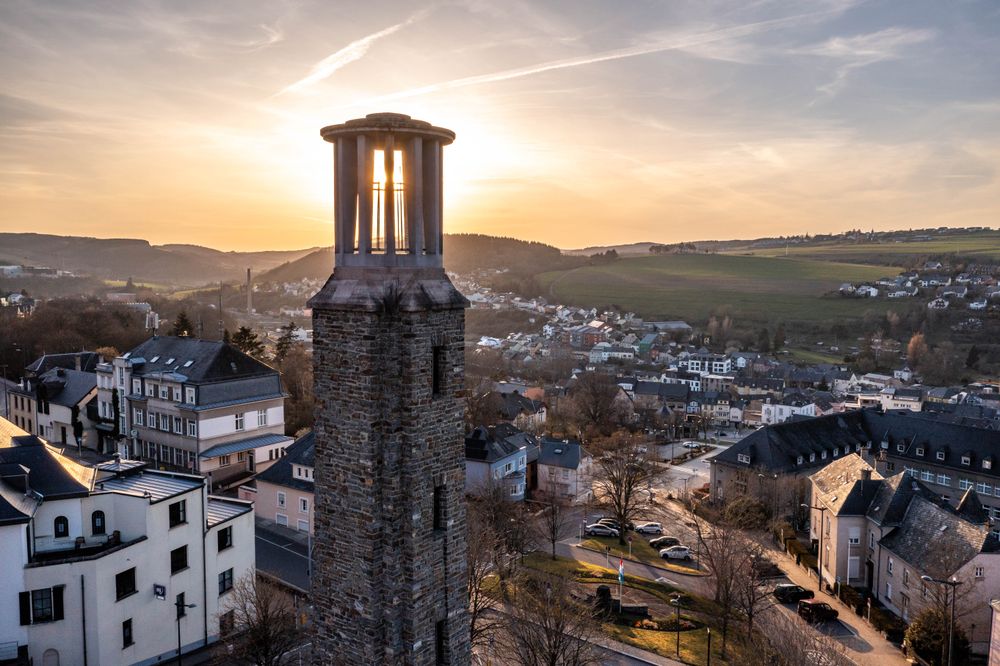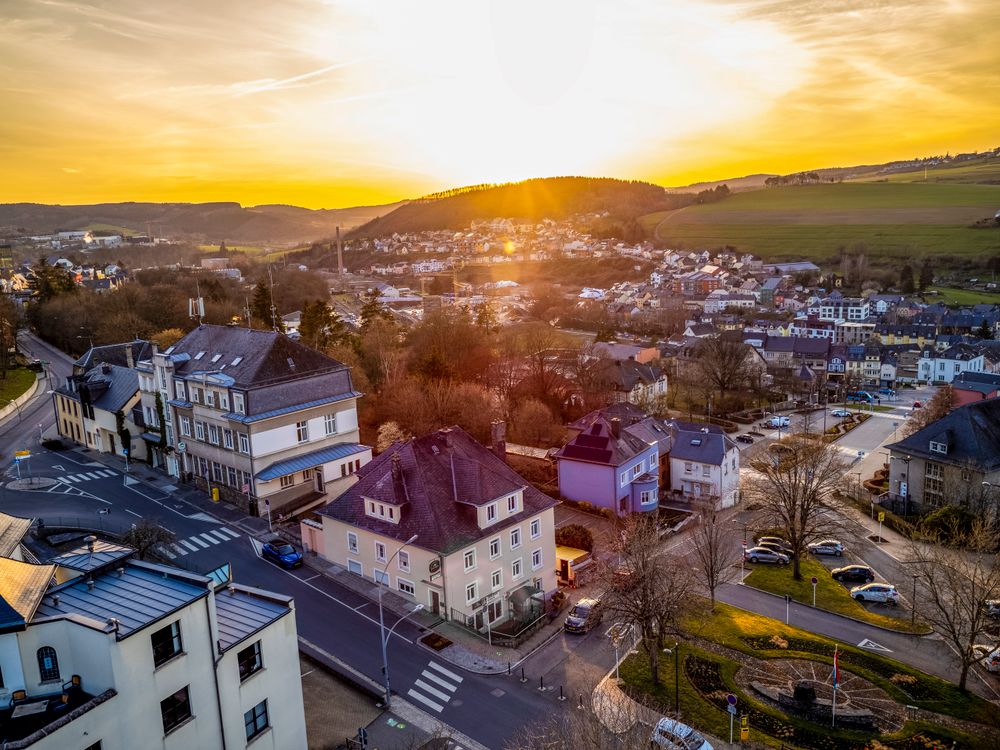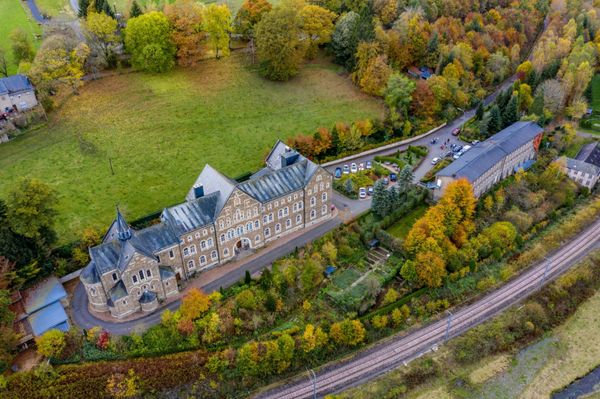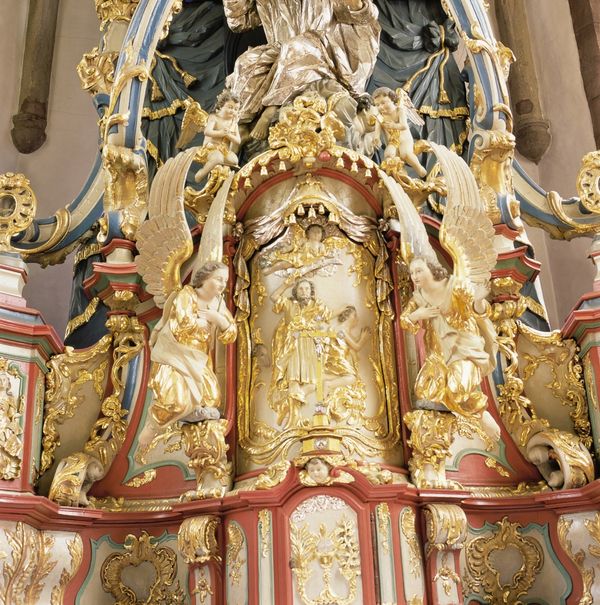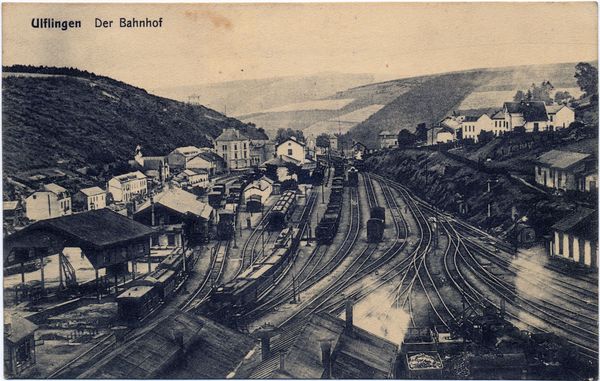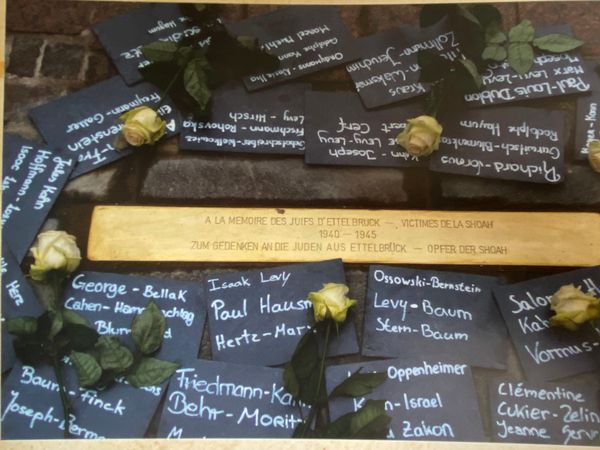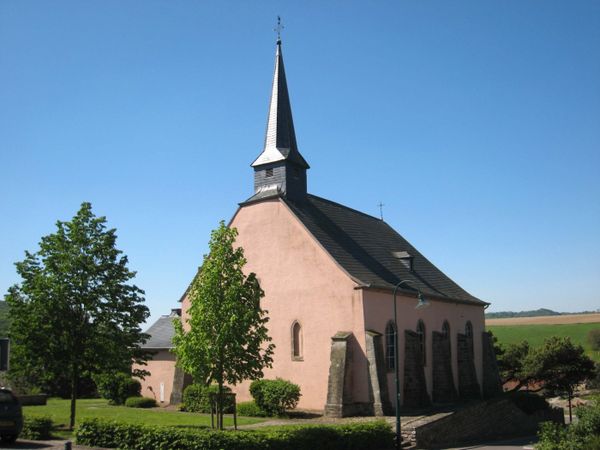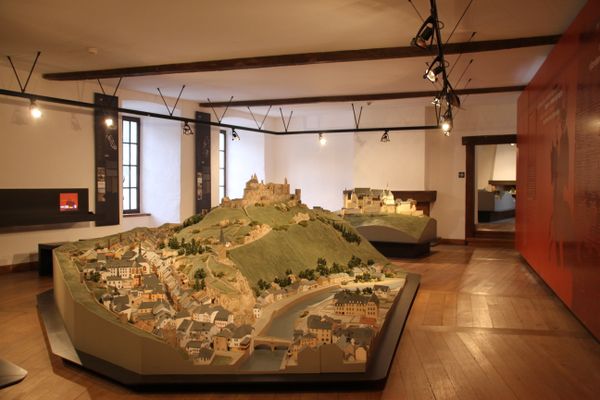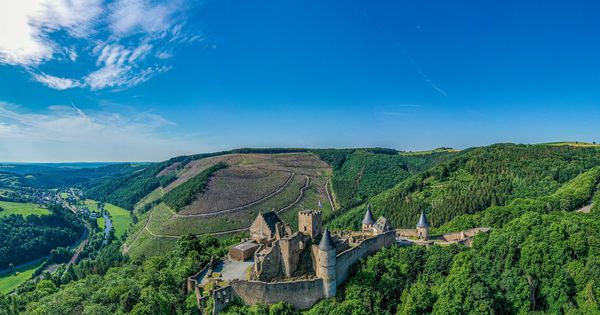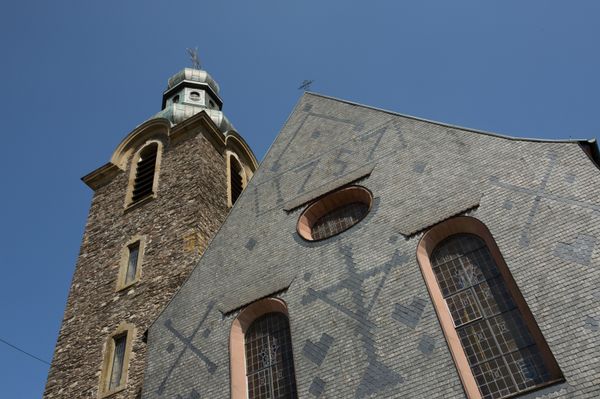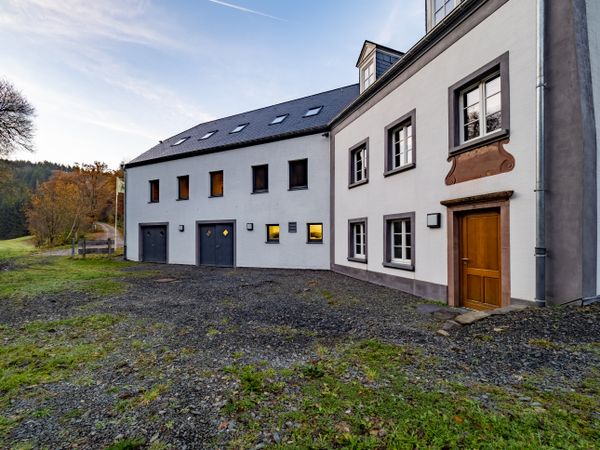
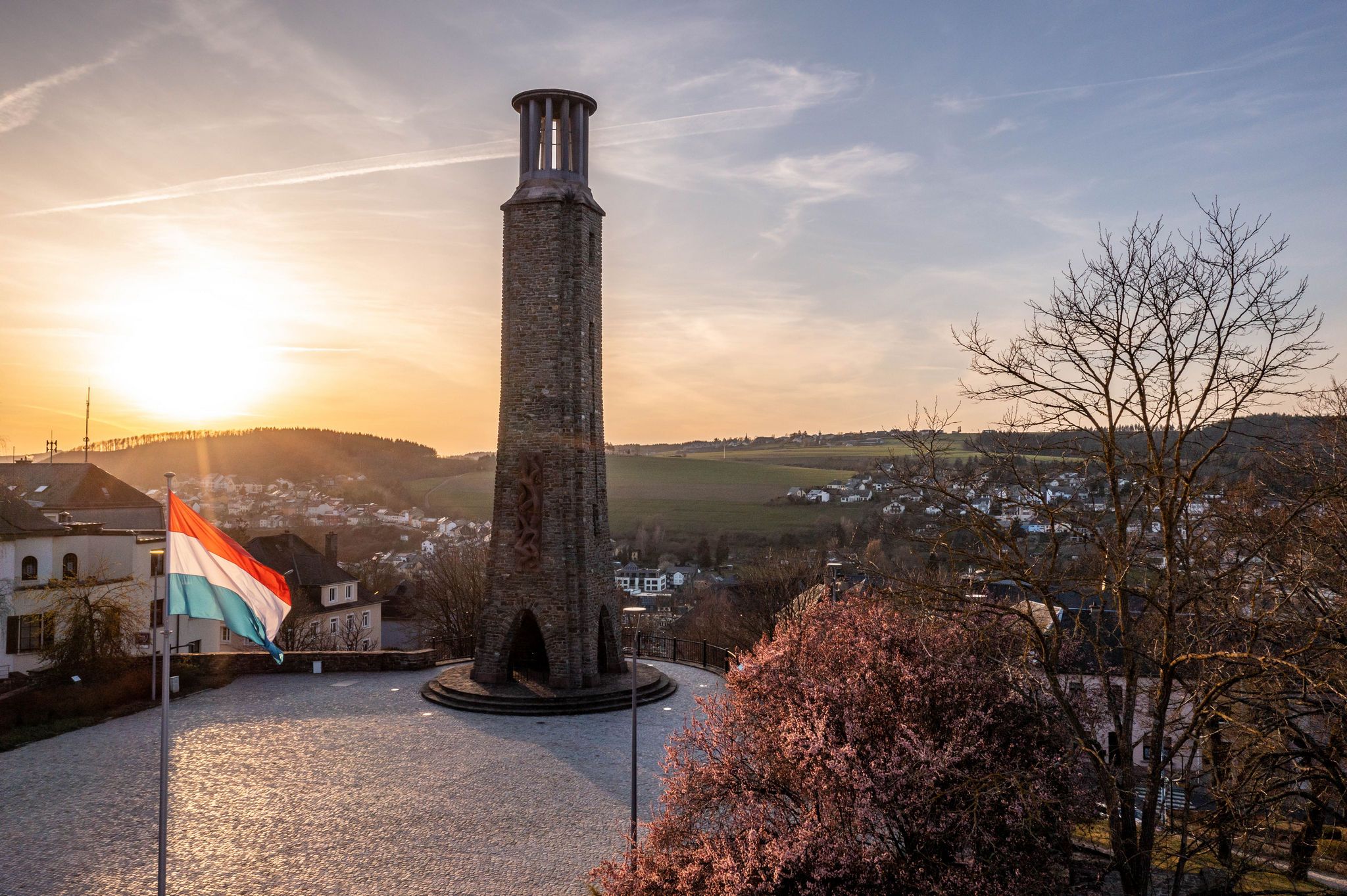
National Strike Monument Wiltz
Where? 35, Rue du Château, L-9516 Wiltz
Visit the impressive monument commemorating the general strike during the Second World War. Learn more about the tragic events of that time that shaped Luxembourg's history.
After the introduction of compulsory military service in August 1942, a general strike broke out in Wiltz against the occupiers. The strike movement quickly spread throughout the country, which the occupiers responded to with brutal violence. 21 Luxembourgers were executed.
A monument in the shape of a lighthouse commemorates the victims of the general strike during the Second World War. It was built of Wiltz slate and inaugurated on 30 September 1956. On the street side, a relief made of red sandstone depicts the battle of the biblical David against Goliath and symbolises the courageous resistance of the Luxembourgers against the overpowering Third Reich. The reverse side shows Luxembourg strikers arrested and collapsing under bullets in the Hintzert concentration camp.
The monument stands as a memorial to the free world to stand up every day against violence, oppression and disregard for human rights. Every year on 31 August, the courageous victims are commemorated in a memorial ceremony.
Practical information
- Accessible to all
Culture info
- History
Opening hours

